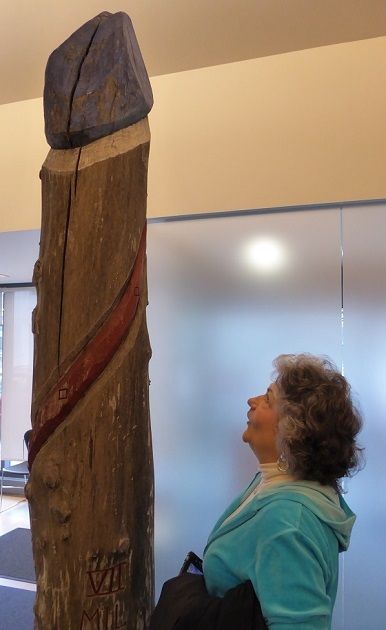
Specimen on display at the Iceland museum
REYKJAVIC, Iceland -- Moseying around the downtown shopping lanes of Iceland’s capital you probably wouldn’t expect to come across a phallological museum. In plain English, a penis museum. Yes, for real. Tucked away inside a plain wrapper kind of storefront, the museum – touted as the only one of its kind in the world – has well over 200, er, specimens on display.
Some visitors try to keep a straight face, some giggle and some aren’t sure how to act as they browse around specimens ranging from a hamster’s tiny private part (you need a magnifying glass to see it) to a 5-foot-long tip of an organ from a blue whale.

The museum reportedly hosts some 11,000 visitors a year, about 60 percent women. “We’re a must-see for students specializing in phallological studies,” the manager said.
SUVA, Fiji -- What in the world could Thomas Baker have been thinking when he started fiddling with a hair comb worn by a Fijian chief in 1867? After eight years on the island, the English missionary should have known that touching the head of a chief – especially a cannibal chief – is a huge no-no in Fijian culture. So it’s no wonder he wound up as lunch that day. Ditto for the eight guys who came with him to Nabutautau, a little hamlet in the remote highlands of Viti Levu, the largest of Fiji’s 300 islands.
Fast forward to today, and you can see what’s left of Baker in a palace-like museum here in Fiji’s capital. Stroll around the Fiji Museum’s old-time dugout canoes, rusting rifles, battle clubs, artworks, masks, musical instruments, history charts and the like, and you’ll come across an odd-looking glass case spotlighting what looks like chewed up pieces of bark. Actually, they’re eight boiled pieces of the soles of Baker’s boots.
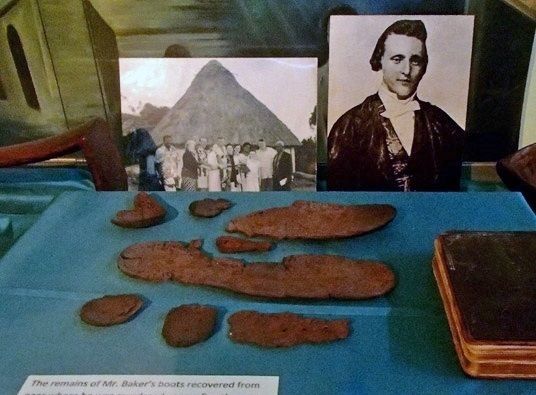
What’s left of Thomas Baker.
The significance of the display is that the Baker luncheon was the last recorded incident of cannibalism on the Fiji islands. Before then, the local folks had earned quite a rep for chowing down on just about anyone who looked yummy.
Stories about the stewpots of Fiji finally brought a tsunami of pastors to the islands from the London Missionary Society. The men of the cloth put an end to people-noshing when they converted a super-chief named Cakobau to Christianity, and with him most of Fiji.
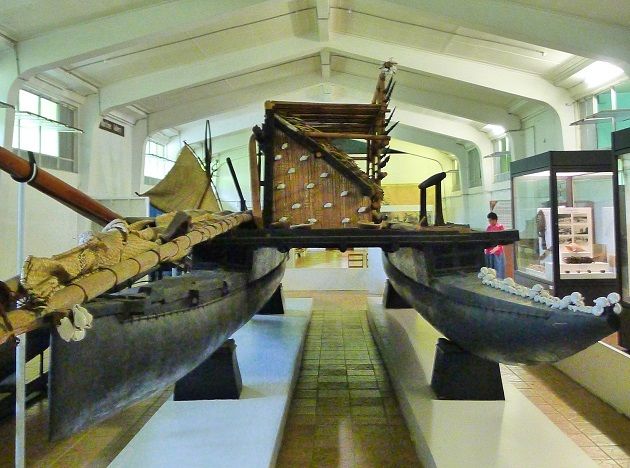
War canoes on display at the Fiji museum.
BARRANQUILLA, Colombia – There was a time when Spanish explorers came here to go charging into the steaming jungles edging the nearby Magdalena River looking for the area’s fabled cities of gold. What they found were the spears and arrows of hostile tribes, dysentery, malaria, yellow fever and all kinds of poisonous or man-eating critters. No wonder few of the explorers made it back to Barranquilla.
You’ll find out why the explorers came to this spot about half-way down Colombia’s 600-mile-long Caribbean coast – as well as everything else you’ve always wanted to know about the country – at a hi-tech museum in Barranquilla’s centuries-old historic district.
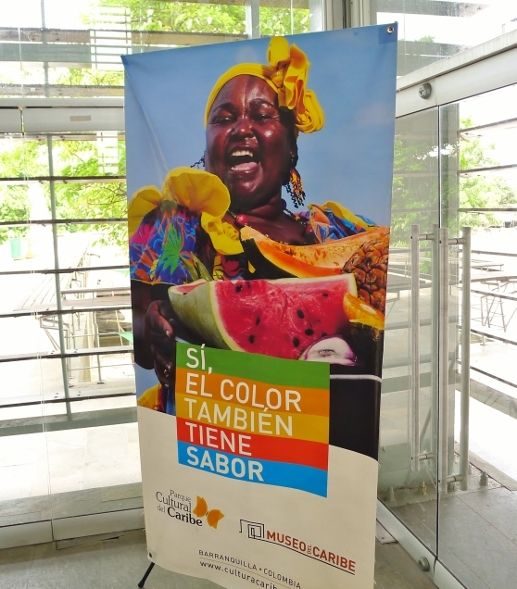
Poster greets visitors to the museum in Barranquilla.
Called the Museum of the Caribbean, it fills five floors and has five sections: Nature, People, Words, Action and Expression. Guides take visitors on tours of the museum in which you'll see and hear those five subjects come alive in everything from the early indigenous roots of the region to the Spanish conquest to Colombia's fight for independence to its modern-day culture.
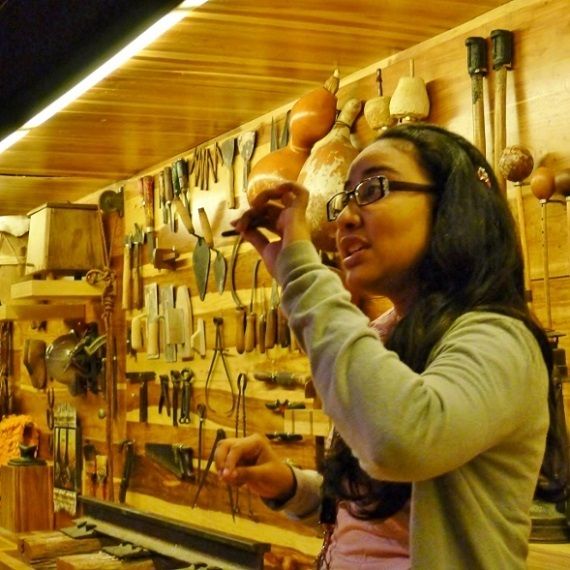
Guide explains the evolution of Colombian tools.
You'll notice the museum uses lots of ways to pep up your tour. For instance, you'll watch history unfold on a huge panoramic screen... you'll press buttons and tap icons to make the exhibits almost roll over and bark... you'll step into booths where you'll hear local music such as bullerengue, chalupa and compas.
Play your cards right, and you might be able to get the guides to show you the different booty-shaking moves to these tunes.
